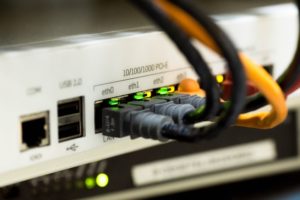In today’s interconnected world, the prevalence of data breaches poses a significant threat to personal and financial security. Understanding how to respond and recover from these security incidents is paramount for safeguarding one’s identity. In this guide, we’ll explore the crucial steps individuals can take to navigate the aftermath of a data breach and fortify their defenses against identity theft.
Assessing the Breach: Understanding the Scope
The first step in responding to a data breach is assessing the extent of the compromise. Identify the types of data exposed and evaluate the potential impact on personal information, such as financial details or login credentials. Even at home, having an iptv (Internet Protocol Television) can inadvertently expose personal viewing habits and preferences. In the aftermath of a breach, it’s crucial to recognize the various forms of data that may be at risk, including personally identifiable information (PII) and any content accessed through digital platforms. This initial assessment forms the foundation for a strategic response.
Notifying Relevant Parties: Communication With Institutions
Effective communication with relevant institutions is critical in the aftermath of a data breach. Inform banks and credit card companies about the incident, enabling them to monitor accounts for suspicious activities. Collaborating with financial institutions enhances the overall security response.
Considering Immediate Actions: Strengthening Security Measures

Upon discovering a data breach, swift and decisive actions are necessary to minimize potential damage. Change passwords for affected accounts promptly and consider implementing two-factor authentication where possible. This immediate response helps secure compromised accounts and prevents further unauthorized access.
Safeguarding Against Future Threats: Long-Term Recovery Strategies
Beyond the immediate response, long-term recovery strategies are essential for comprehensive identity protection. Enrolling in identity theft protection services provides ongoing monitoring, alerting individuals to potential misuse of their personal information. This proactive approach adds an extra layer of defense against identity theft.
Remaining Skeptical Against Social Engineering: Verifying Communications
Social engineering tactics often target individuals through deceptive communication. Remaining skeptical of unsolicited requests for personal information and verifying the legitimacy of communications can thwart attempts at identity theft. This skepticism serves as a crucial line of defense against manipulation.
Credit Monitoring: Vigilance in Financial Security

An additional layer of long-term recovery involves proactive credit monitoring. Placing a fraud alert on credit reports notifies credit bureaus of potential identity theft. Regularly reviewing credit reports for any unauthorized or suspicious activity enables individuals to detect and address potential financial threats promptly.
The response to a data breach extends beyond immediate actions to encompass ongoing strategies and preventive measures. By incorporating credit monitoring, building digital literacy, securing social media presence, remaining skeptical against social engineering, and seeking professional guidance, individuals can navigate the complexities of identity protection in the digital age. The proactive approach outlined in these steps not only aids in recovery but also strengthens one’s resilience against future security incidents.…




 It’s easy to lose track of what you’ve watched on
It’s easy to lose track of what you’ve watched on 

 Another sign that your business needs professional IT support is if you have new technology that is more complicated than your staff can handle. This can be anything from a new software program to a new type of printer. If your team does not know how to use the latest technology, it will likely cause more problems than it solves. In this case, it is best to get professional help to use the new technology properly.
Another sign that your business needs professional IT support is if you have new technology that is more complicated than your staff can handle. This can be anything from a new software program to a new type of printer. If your team does not know how to use the latest technology, it will likely cause more problems than it solves. In this case, it is best to get professional help to use the new technology properly.
 One of the most important trends in business process improvement is the rise of collaboration technologies. These tools allow businesses to work together more effectively and get more done in less time. Using these technologies, companies can improve communication and coordination between employees, customers, and partners. This leads to better decision-making, increased productivity, and improved customer satisfaction. Some popular collaboration tools include Slack, Trello, and Google Docs.
One of the most important trends in business process improvement is the rise of collaboration technologies. These tools allow businesses to work together more effectively and get more done in less time. Using these technologies, companies can improve communication and coordination between employees, customers, and partners. This leads to better decision-making, increased productivity, and improved customer satisfaction. Some popular collaboration tools include Slack, Trello, and Google Docs. Another trend affecting business process improvement is the increasing availability of high-speed internet. It allows businesses to communicate and share information more quickly and easily. With faster internet speeds, companies can connect with customers and partners in other parts more easily. This leads to better customer service, shorter project timelines, and increased productivity. If you’re not using high-speed internet, now is the time to upgrade your service.
Another trend affecting business process improvement is the increasing availability of high-speed internet. It allows businesses to communicate and share information more quickly and easily. With faster internet speeds, companies can connect with customers and partners in other parts more easily. This leads to better customer service, shorter project timelines, and increased productivity. If you’re not using high-speed internet, now is the time to upgrade your service. Another trend affecting business process improvement is the rise of remote learning. With this type of learning, businesses can provide training and education to employees without having to bring them into the office. It saves time and money and allows companies to reach a larger audience. for instance. You can do it remotely if you’re looking to train your sales team on the latest product. This means they can learn at their own pace and from anywhere in the world. While the list of technology trends above is by no means exhaustive, it should give you a good starting point for understanding which technologies can help improve your business processes.…
Another trend affecting business process improvement is the rise of remote learning. With this type of learning, businesses can provide training and education to employees without having to bring them into the office. It saves time and money and allows companies to reach a larger audience. for instance. You can do it remotely if you’re looking to train your sales team on the latest product. This means they can learn at their own pace and from anywhere in the world. While the list of technology trends above is by no means exhaustive, it should give you a good starting point for understanding which technologies can help improve your business processes.…
 is sensitive to temperatures, both low and high, but it is normal. Therefore, the ideal is to charge
is sensitive to temperatures, both low and high, but it is normal. Therefore, the ideal is to charge  phone with an LCD screen containing liquid crystals that can freeze in very low temperatures. In the case of cell phones with OLED and AMOLED screen protectors, they will not have a significant problem. Whether you have a cell phone, it is convenient that you use a protective cover if you are in a very cold place. Also, you should avoid leaving it inside your car without any protection.…
phone with an LCD screen containing liquid crystals that can freeze in very low temperatures. In the case of cell phones with OLED and AMOLED screen protectors, they will not have a significant problem. Whether you have a cell phone, it is convenient that you use a protective cover if you are in a very cold place. Also, you should avoid leaving it inside your car without any protection.…
 A good way to limit the risk of equipment or data being stolen is to make it quite hard to access the said equipment or data. You can do this by distributing a few keys to employees and track those who have them. Keys to areas that contain expensive equipment or information must be very few. Also, you can install an access control system that limits access to different areas of the building.
A good way to limit the risk of equipment or data being stolen is to make it quite hard to access the said equipment or data. You can do this by distributing a few keys to employees and track those who have them. Keys to areas that contain expensive equipment or information must be very few. Also, you can install an access control system that limits access to different areas of the building. If security breaches or break-ins occur, nobody in the team is going to think straight. Help your employees respond positively by offering them with a response plan before anything fun happens. Also, there is a need for your employees to be trained on the proper protocols. It does not matter whether your team will have to use the knowledge; it will relieve and empower employees to understand that there is a system in place. In this way, you can move your business forward by avoiding cyber-attacks and physical burglaries.…
If security breaches or break-ins occur, nobody in the team is going to think straight. Help your employees respond positively by offering them with a response plan before anything fun happens. Also, there is a need for your employees to be trained on the proper protocols. It does not matter whether your team will have to use the knowledge; it will relieve and empower employees to understand that there is a system in place. In this way, you can move your business forward by avoiding cyber-attacks and physical burglaries.…